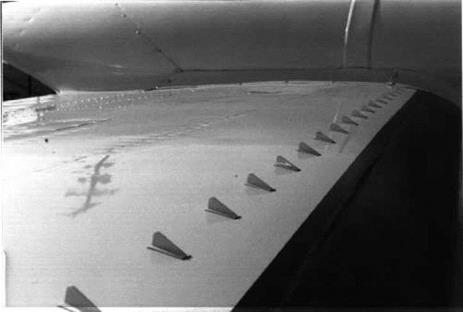Modern Light Twin Airplanes
The situation is different again in the case of the modern light twin airplanes. The first of these planes was the five-to-seven place Aero Commander 520, introduced by the Aero Design and Engineering Corporation of Culver City, California, in 1950. A year or so later Beech introduced its Model 50 Twin Bonanza, Piper its Model PA-23 Twin Stinson (later called Apache), and Cessna its Model 310 twin. These aircraft and their successors have a great deal of appeal to aviators who regularly fly on instrument flight plans into bad weather and those who want the extra safety of a second engine.
Yet by the early 1980s the safety records compiled by the modern light twins did not bear out this expectation. Writing in the AOPA Pilot of January 1983, Barry Schiff pointed out that the fatality rate following engine failure in light twins was four times that for engine failures in single-engine airplanes. It seems that relatively low-time private pilots were being trapped by the yaw and roll caused by the failure of one engine at low speeds and altitudes.
The Beech Model 95 Travelair and its higher power military derivative, the U. S. Army’s T-42A, are good examples of what could happen. After several fatal stall-spin accidents following power loss on one engine a courageous Army pilot made a series of T-42A stall tests, with symmetric and antisymmetric power. His report told of moderate wing drop in symmetric stalls, but of vicious behavior in stalls with one engine idling. The airplane would roll nearly inverted, clearly headed for a spin.
The response of the Federal Aviation Administration (FAA) to this generic light twin hazard was not to require design changes, but to warn pilots and to stress recognition and compensation for single-engine failure during training and flight tests for multiengine pilot ratings. Pilots are drilled to instantly recognize the failed engine by the mantra “Dead foot, dead engine.” Since accidents occur during the incessant single-engine drills in training, there is a special minimum airspeed for “intentionally rendering one engine inoperative in flight for pilot training.”
This is Vsse, the fourth of the special airspeeds the poor pilot has to memorize in order to legally operate multiengine airplanes. The others are Vmc or Vmca, the minimum airspeed for control with the critical engine’s propeller windmilling or feathered, the other delivering takeoff power; and Vxse and Vyse, the best angle of climb and rate of climb airspeeds with one engine inoperative. Vyse has its own marking on the airspeed dial, a blue line usually used as the landing approach airspeed under normal conditions. Evidently, if an engine fails on landing approach, one wants the airplane to be already at its best airspeed to climb away or to lose as little altitude as possible. The four special airspeeds for multiengine airplane operation are added to nine other special airspeeds (six if the airplane has no wing flaps or retractable landing gear) to be remembered.
In spite of the FAA’s apparent disinterest in obliging light twin builders to design safe single-engine behavior into their airplanes, there have been some attempts made in this direction. There is an FAA-approved design retrofit of vortex generators for the upper wing surfaces of some light twins. The installation reduces Vmca, the minimum airspeed for control with an engine out (Figure 4.3). Vortex generators are tiny (about 2 inches square)
|
Figure 4.3 Vortex generators fitted to the upper wing surface of a Piper PA-31-3 50 Chieftan light twin-engine airplane, to reduce minimum single-engine control speed Vmca. This installation of 43 generators on each wing was designed by Boundary Layer Research, Inc., of Everett, WA. |
low-aspect ratio wings that stick out of a surface. The tip vortices from a spanwise row of generators set at angles of attack energize the surface’s boundary layer by mixing in with it high-energy air from the surrounding flow. The energized boundary layer tends to remain attached, avoiding separation or stall.
According to John G. Lee (1984), vortex generators were invented by “an introspective and rather unapproachable loner” named Hendrik Bruynes, who used eight vortex generators to correct separation from the walls of the diffuser in a new 18-foot United Aircraft Research Department wind tunnel. While Bruynes was named in the vortex generator patent, Lee credits Henry H. Hoadley with the key idea of reversing the angles of alternate generators. The Forty-Second Annual Report of the NACA, dated 1956, flatly credits H. D. Taylor of United Aircraft as the developer of vortex generators; no mention is made of either Bruynes or Hoadley.












